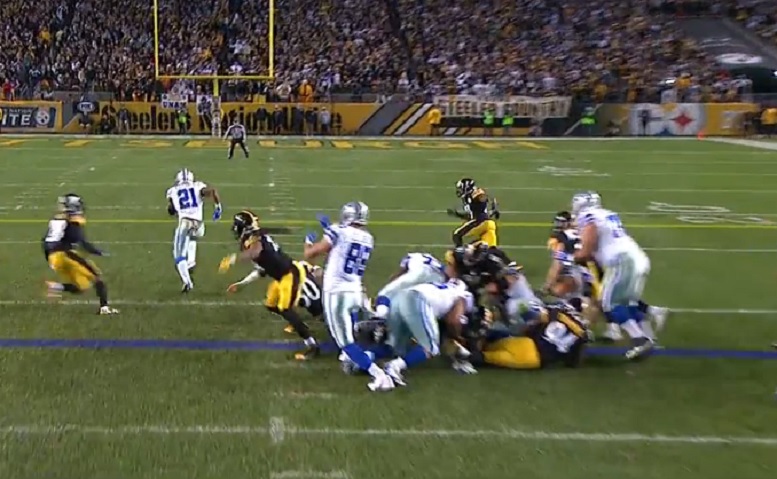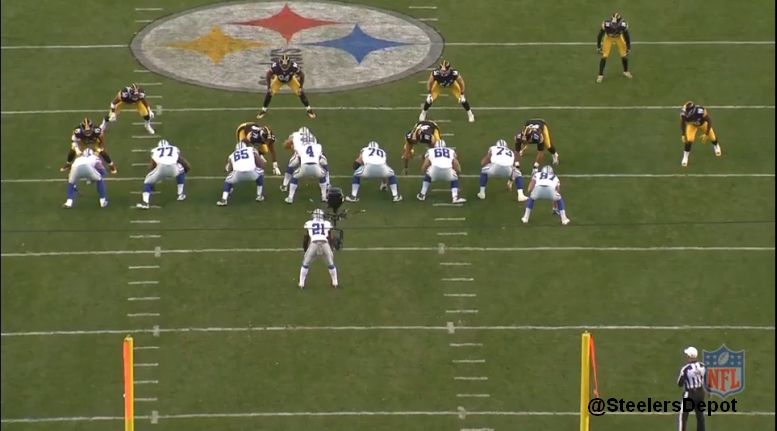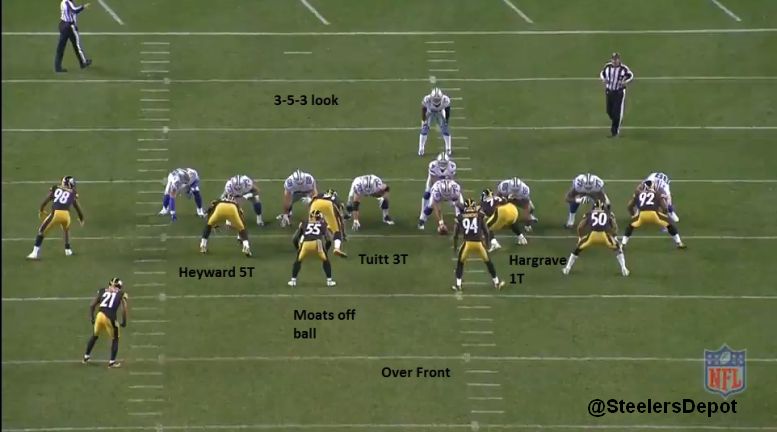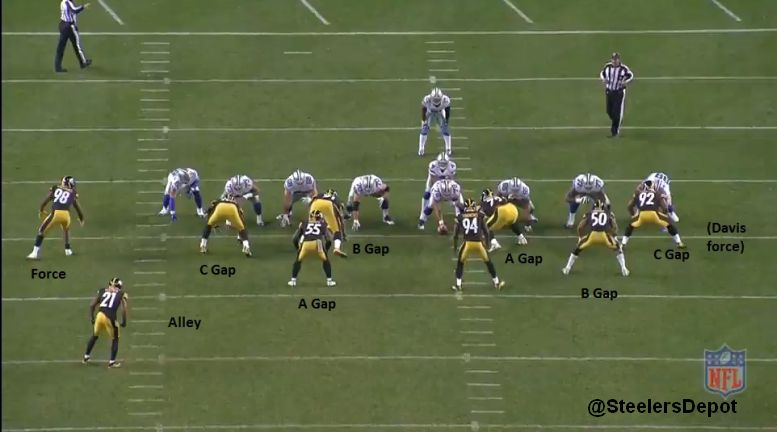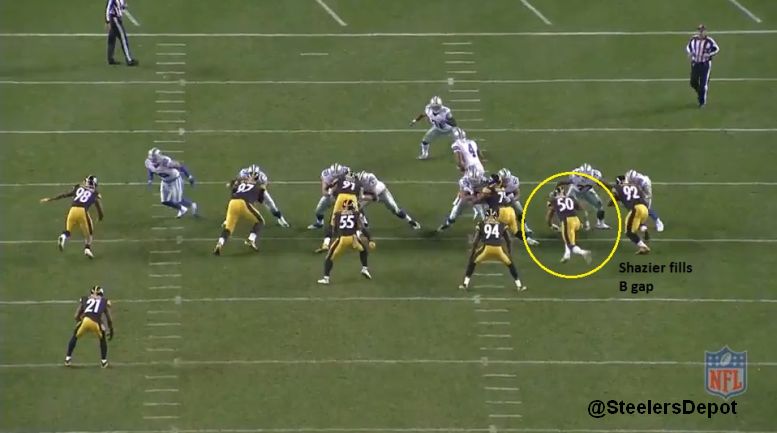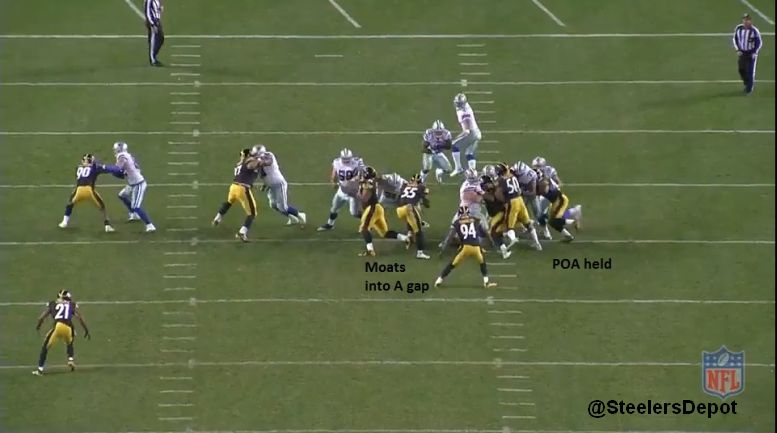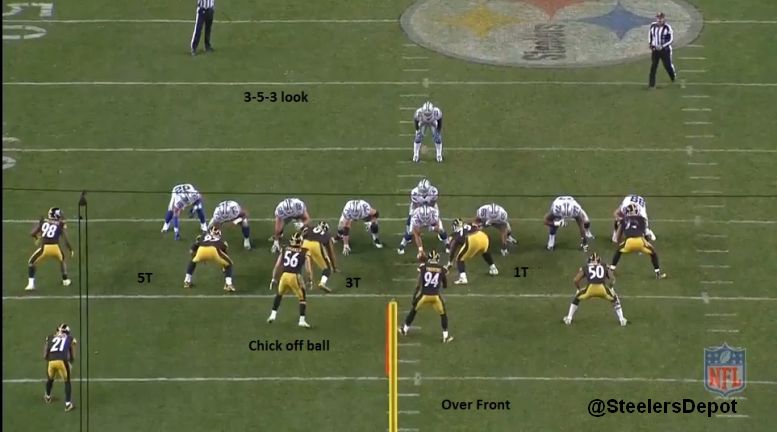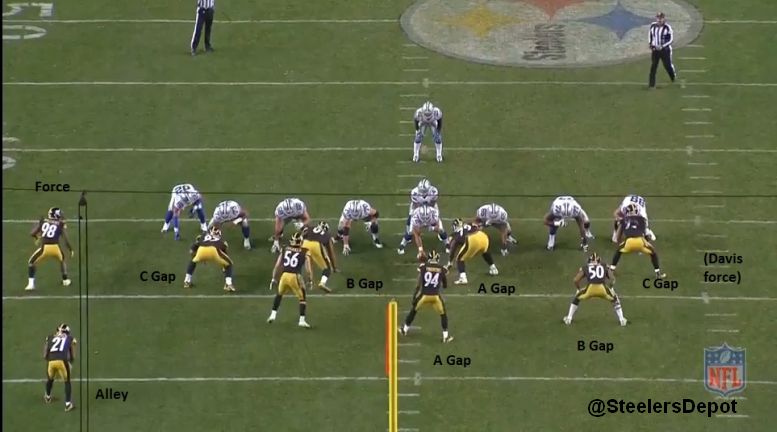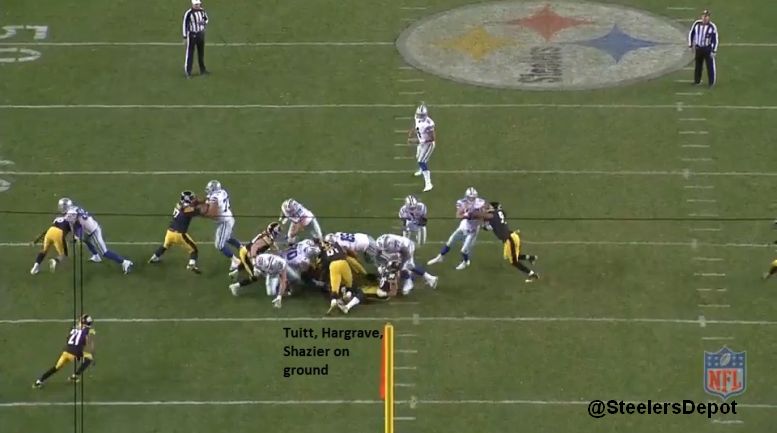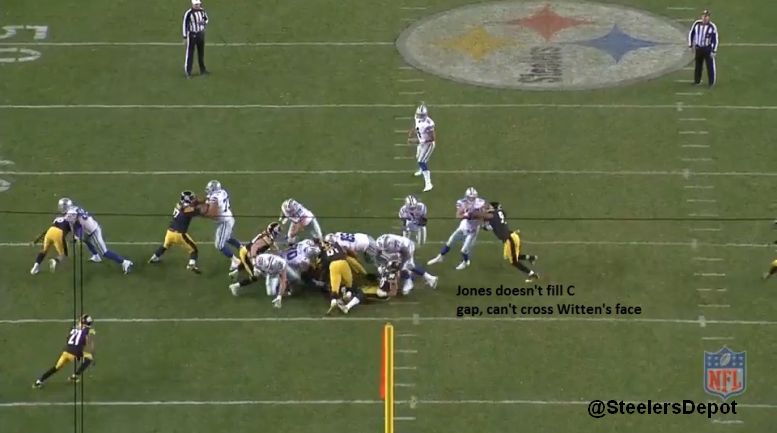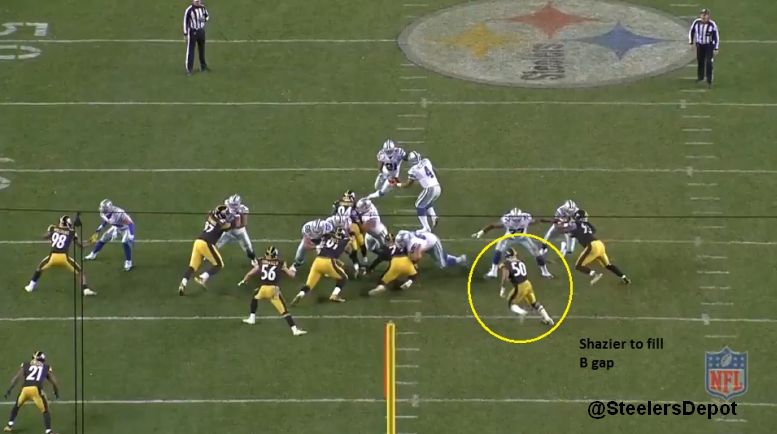Truth be told, I sort of felt like the game was over after Sean Davis’ facemask that put Dallas in field goal range. It was by no means a gimmie, a 49 yard attempt, but with Dan Bailey, it seemed like a death sentence.
But Ezekiel Elliott sent the final blow. A 32 yard touchdown run in the final seconds, sewing up the Cowboys’ victory. He ran seemingly straight ahead, untouched to paydirt.
So what the heck happened?
The, I guess you can call it good think for the purposes of our breakdown, is the Steelers used a special personnel grouping against the Cowboys’ 13 personnel. It was a 3-5-3 look with at times, Shamarko Thomas and/or Sean Davis at cornerback. Here’s an example.
And throughout the game, the Steelers ramped up their use of their over front, that faux 4-3 look they have used more over the past few weeks. They combined both these wrinkles at times and did so on Elliott’s touchdown.
Before we get to that play, we can reference similar looks from earlier in the game to understand their run fills.
This first example is Sean Davis’ great 3rd down stop in the early portions of the fourth quarter. They are in that over look. Javon Hargrave remains at his one tech spot but Stephon Tuitt is at the three and Cam Heyward at the five. Arthur Moats is shifted off ball.
Here are the apparent gap assignments for the play.
It’s a man blocking scheme and Hargrave does a nice job taking on the double-team (an ace block) by the center and guard.
Shazier is shooting down into the B gap with James Harrison crossing the face of the tight end. Everyone maintains their lane, stays on their feet, holds the point of attack, and Elliott is forced to bounce the run.
That’s where Davis comes in. On most of these plays, Davis isn’t playing the receiver. Once he gets a run key, he crashes down, replaced by Mike Mitchell over the WR, and becomes the force player to that side, not allowing contain. It isn’t an easy assignment, the read/react must be quick and you have to reach that spot before the back gets there (the OLB to that side has the C gap and is scraping inside, he will offer no help in contain) but Davis does a marvelous job. He cleans things up with the tackle and Dallas is forced to punt.
Now let’s look at the touchdown.
Same look for each. 13 personnel against the Steelers’ over front.
And the run fits are pretty much the same.
There are a couple problems with the execution.
1. Players off their feet. Here’s a good rule of thumb, generally speaking. When players are on the ground, bad things happen. When they’re on their feet, good things happen. Javon Hargrave is about as useful as me if he’s on the grass. Ditto with Tuitt.
And that’s what happens here. Hargrave gets buried and Shazier loses his footing as Elliott cuts it back.
2. Jarvis Jones doesn’t win his gap. As we showed in the first example, the linebacker has to maintain the C gap. He can’t get reached and give up the inside. Jason Witten does a great job of keeping him at bay, maintaining inside leverage just enough. So when Elliott does cut back, there is no one there.
Remember, Jarvis isn’t the force player. The CB, again Sean Davis, is. Jarvis isn’t force. He isn’t two-gapping. He is responsible for one gap. And he failed.
At first glance, it may have looked like Ryan Shazier over pursued and gambled. I get that. But he didn’t. He was responsible for the B gap and when the left tackle fired off the ball and blocked down, Shazier crashed inside. It was the appropriate play.
Guys have to stay on their feet, they have to create the wall so the back can’t get downhill in a hurry, though I put more blame on Hargrave than I do Shazier. Shazier was reacting to the cutback, he didn’t get buried. And Jones has to carry out his run fill. If both those things happen, Elliott isn’t reaching the end zone.
But when you’re sloppy, you lose.

